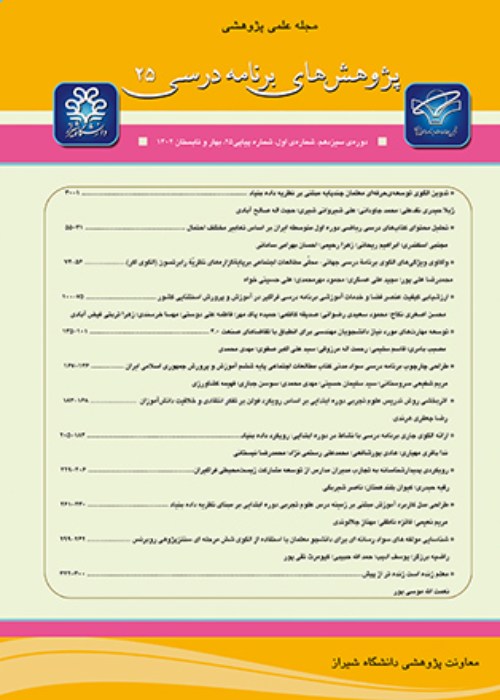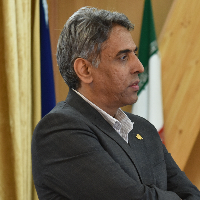Investigating Students’ Individual Differences and Examining Their Theoretical Implications for Curriculum Design
Although students share many similarities, they are uniquely different in many ways. In the field of education, these differences are of crucial importance, and failing to heed them frustrates the realization of educational justice. According to international education policies, schools are expected to contribute to the promotion of justice and social equality through relevant curricula and justice-based processes. They play an essential role in providing equal opportunities by celebrating individual differences, interests, and abilities. Paying attention to the individual differences of students in schools can play an important role in upholding the purpose of education. Implementing a curriculum that recognizes individual differences through the personalization of learning can promote the goals of education. Many theories, including child-centered education (Dewey, 1902(, cognitive development theory (Piaget & Inhelder, 1972), sociocultural theory and zone of proximal development (Vygotsky, 1978), and the theory of multiple intelligences (Gardner, 1987) have all established theoretical foundations that highlight individual differences in education. Educational research, however, has not paid enough attention to these theories. The importance of individual differences and their implications for curriculum design have not been explored fully yet. Therefore, the present study aimed to investigate which theories supported the importance and inclusion of learners’ individual differences in curriculum design and what implications each of those differences could have for different elements of the curriculum. The present study used a qualitative method to design a school curriculum. For this purpose, six theories, including sociocultural theory, mastery learning model, brain-based learning theory, cognitive style theory, theory of learning styles, and theory of multiple intelligences, in the field of psychology were examined. Each of these six theories emphasizes the existence of individual differences between human beings from a different perspective. These six theories were chosen among others following educational experts’ recommendations regarding their importance to education and potential implications for the elements of the curriculum. To design the curriculum based on each of these theories, Akker’s (2003) curriculum spider web was used because of its comprehensiveness concerning different curriculum elements. This curriculum model has nine strings, including aims and objectives, content, materials and resources, learning activities, teacher role, assessment, time, location, and grouping, and a core called ‘rationale’, to which the other nine elements are ideally connected. To draw some implications for each of the above elements of the curriculum, each of the aforementioned six theories and their basic principles were examined. The initial implications drawn by the authors were evaluated and reevaluated to determine the final implications. The Delphi technique was used to validate the list of implications. That is, the implications extracted from each theory, along with the explanation of the theory and its principles, were presented to a relevant group of experts. Then, the list of implications extracted from the six theories underwent necessary changes based on the experts’ ideas and reflections. The experts were selected using purposeful criterion sampling. The criteria considered in this study for sample selection included relevant academic education, academic publishing (e.g., articles, books, etc.), and general expertise related to the six theories referred to above. After examining each theory and exploring its significance to the ten elements of the curriculum spider web, a final attempt was made to breathe diversity and plurality into the curriculum. It was explained to the curriculum planners that learners were different in basic areas, such as socio-cultural background and zone of proximal development (sociocultural theory), the time required for learning (mastery learning theory), brain structure and schema (brain-based learning theory), information processing: thinking, understanding, and remembering information (cognitive style theory), the preferred method of learning skills (theory of learning styles), and IQ profile (theory of multiple intelligences). The inferences as well as the principles, including the principle of the centrality of the learner, the principle of inclusive education, the principle of diversity and plurality, and the principle of flexibility, drawn from each of the theories were used to support the development of the curriculum and its elements so that it would be more in, rather than out of, tune with the real world of students and their interests. With the implementation of such a learner-centered and inclusive curriculum, education processes are hoped to operate more equitably and with greater accountability than traditional education systems. Ensuring that each student experiences the maximum opportunity to learn is a goal that should be promoted through individualization and personalization in policy and curriculum development.
- حق عضویت دریافتی صرف حمایت از نشریات عضو و نگهداری، تکمیل و توسعه مگیران میشود.
- پرداخت حق اشتراک و دانلود مقالات اجازه بازنشر آن در سایر رسانههای چاپی و دیجیتال را به کاربر نمیدهد.




